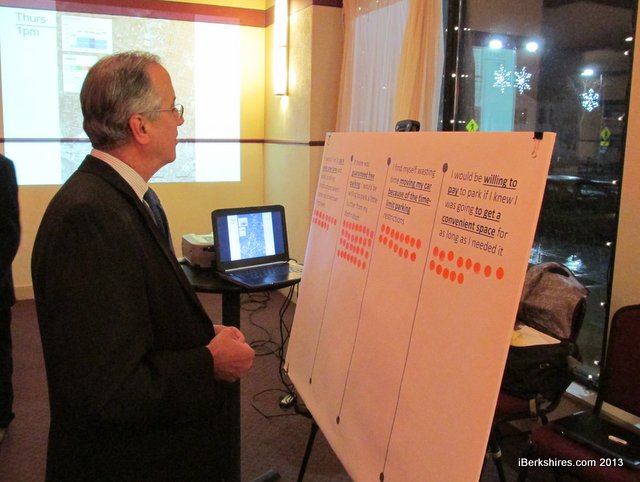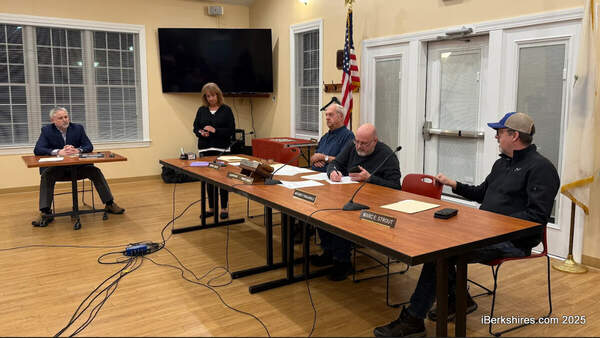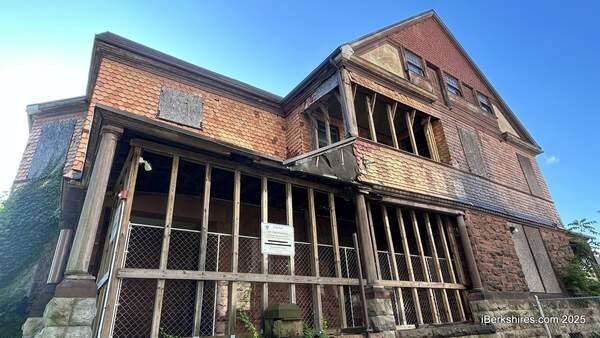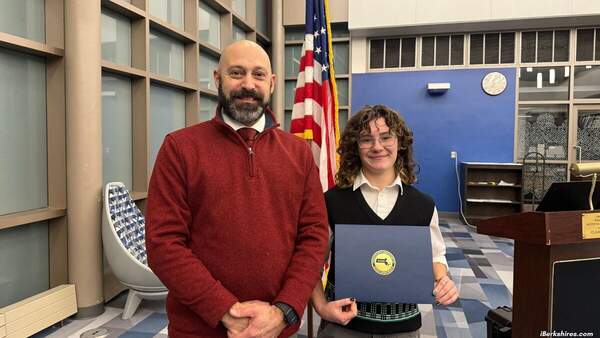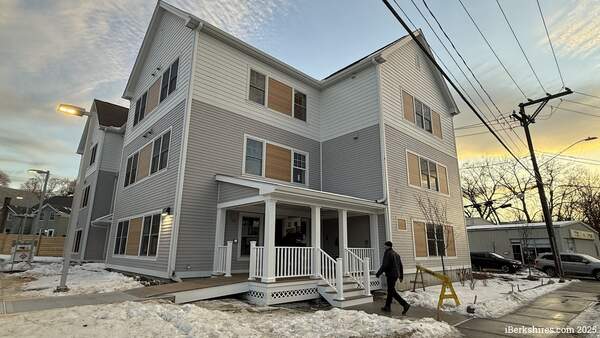Pittsfield Latest To Take On Daunting Question of Downtown Parking
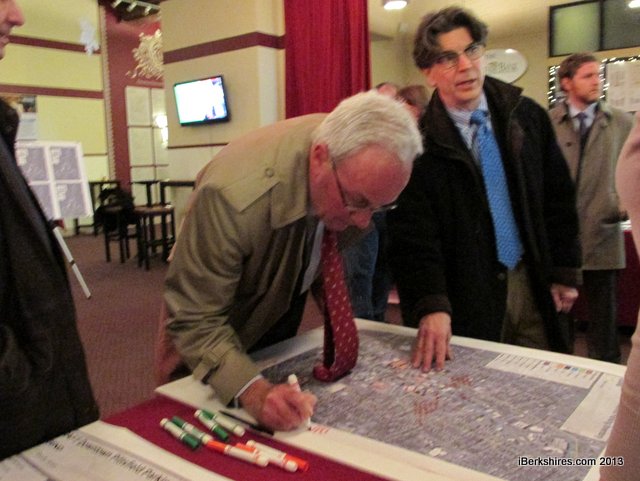 The public, downtown merchants and other stakeholders were asked to attend an open house on the issue Thursday night. The public, downtown merchants and other stakeholders were asked to attend an open house on the issue Thursday night. |
PITTSFIELD, Mass. — Finding the right way to handle parking in downtowns is a thorn in the side of municipal officials.
And Pittsfield is now diving into the issue with a comprehensive look at parking — from enforcement to management to revenues.
On Thursday, the city held a public input session at the Colonial Theatre in hopes for information on issues from the public. The goal is to develop a new downtown parking plan.
"This is a pretty substantial effort," said Community Development Director Douglas Clark. "This is really a top-down look."
As a requirement of receiving a state grant to renovate the McKay Street garage, the city hired the consulting firm Nelson Nygaard and formed a committee to lead the study. The study involves downtown merchants, various city departments and other stakeholders.
"Parking has been an issue for years and every city wrestles with it," said Mayor Daniel Bianchi. "To have a reasonable strategy, it is a good idea to have this. You want to have a comprehensive look at this."
Pittsfield is just the latest to take on the issue of downtown parking and the questions can be much thornier than they seem at first glance. In North Adams, it took about 16 months before the city finally revamped Main Street parking and it caused heated debate.
After researching the downtown parking in North Adams, the city ultimately switched one side of Main Street to diagonal parking, replaced the meters, increased time limits and raised the price.
"It was a long process," Mayor Richard Alcombright said.
Downtown parking systems come with a lot of balancing acts, said Alcombright, including weighing the wants of merchants, costs, enforcement and safety. In North Adams, the goal was to increase the number of spots while slowing down traffic.
But once the mayor proposed the idea to the City Council, public outcry rose with residents worried about pedestrian and vehicle safety. The mayor suspended implementing it on a permanent basis — providing parking free — before officially adopting it. Additionally, North Adams had engineers change the design slightly to be more pedestrian friendly.
It took two years from the initial discussion to when the city finally fully implemented the parking program.
|
Mayor Bianchi reviewing the answers to questions posed by the consultants that will help direct future changes to the parking. |
Creating a plan can be a complicated issue, even for experts, including the ones Pittsfield hired. In all, the city wants to find the best practices for its landscape while also finding a way to pay for the maintenance of city lots and garages.
And to get that revenue, the city also needs to look at how its will enforce parking laws.
In the early 2000s, the city abolished a parking unit in the Police Department and placed parking clerks under the discretion of the building department. Problems came up in communication because the building department heads were directing the police to ticket in lots while the then police chief wanted his officers to do other policing.
"They weren't taking direction from police supervisors. We were accountable for them but they weren't answering to us. That doesn't work," said current Police Chief Michael Wynn about that change.
From that period of time, Wynn knows what complications are involved in parking enforcement as well as the balancing act with merchants. Merchant particularly want parking to be free for their customers but the city wants the revenue and doesn't want cars to take up the spaces all day. Once the city steps up ticketing, complaints inevitably arise.
"Somebody is going to complain to the mayor and somebody is going to hear about these complaints," Wynn said. "I get complaints from residents when we ticket. I get complaints from principals. I get complaints from business owners. If we're ticketing a business's customers, of course they're going to get upset."
Bianchi said that whatever comes about in the recommendations, "we've got to be sensitive to the merchants as well."
Three of four downtown businesses closing this fall cited the lack of parking as a deterrent to their operations.
"Its a real balancing act," Bianchi said. "With parking, there is not a simple answer."
Alcombright said North Adams is still trying to figure out the right diligence in parking enforcement. But, he said if the parking was free, employees of downtown businesses would use up the spaces and deter customers. That discussion is what led to an increase in time limits on downtown spaces — allowing customers more time to visit shops — while raising the parking fee.
"Where do you draw the line?" Alcombright said. "You don't want to be overbearing because it is a business district."
Then there is weighing the cost of employees to enforce parking regulations, upkeep of city-owned lots and garages so Pittsfield will also have to consider those implications with any changes.
North Adams used a parking study to look at fees and ultimately raised the hourly parking rate from 10 cents an hour to 25 cents an hour. Overall, parking meters and parking permits provide about $120,000 in revenue, which pays for one full-time parking clerk, and few hours for an employee to collect the money.
"You can't ignore the revenue in this economic climate," Alcombright said.
In Pittsfield, enforcement is hampered because police don't have access to the tax collector's records on fines — creating the need for systematic change. Wynn said the department can't see if tickets have been paid and the city's parking fees escalate by offense.
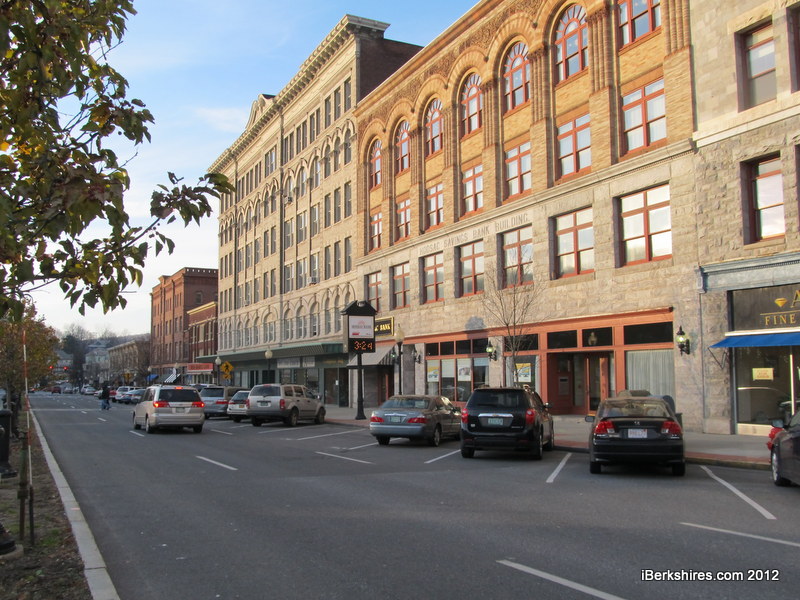 North Adams restored diagonal parking to a section of Main Street to increase spots and reduce speeding. North Adams restored diagonal parking to a section of Main Street to increase spots and reduce speeding. |
Clark said he thinks there may be recommendations on better management the city can do administratively and both Bianchi and Clark mentioned the possibility of creating a parking authority to handle matters.
Then comes the question of how drivers pay. Many municipalities have moved to using kiosk systems to reduce the need for collections and allowing drivers to use credit cards.
North Adams opted not to use a kiosk system as it was considered inconvenient because drivers would have to walk down the street in order to use it. (There is one in the Center Street parking lot.) In the town of Adams, officials were going to use them in a recently created parking lot but ultimately had to pull them from the plan because of costs.
Adams is about to embark on a reconstruction of Park Street and much of the focus in the public process focused on parking issues. In the end, the designers created a plan with a mix of different parking options — from metered to kiosks and diagonal in some places and parallel in others.
So far in Pittsfield, officials are finding parking problems in some parts of the downtown and vacancies in others. The parking committee and consultant hope to find ways to even out the disparities.
"It's not a problem of capacity. It's just where the vacant spots are," Clark said.
Clark said making changes such as adding more signage to the municipal lots would ease parking congestion.
For now, Pittsfield is only in the information gathering stages and Clark said recommendations are expected to be made in March. Bianchi said it will depend on what the recommendations are and if the city has the money to implement them before any actual changes are made. Once recommendations are proposed, neither Clark nor Bianchi expect the conversation to be over.
"No matter what you do there will be people enthusiastic about it and roughly the same amount who won't be," Bianchi said. "It can be a very sticky issue."
While it may be sticky, Alcombright said it was all worth it because he believes the city is in better shape because of the efforts.
"At the end of the day, I think we did the right thing," Alcombright said.

